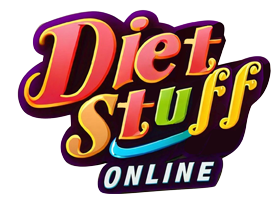
Carb-Cutting 101: A Beginner’s Guide to Low-Carb Dieting
If you’re looking to lose weight, improve your overall health, or simply feel more energetic, you may have considered a low-carb diet. But with so many different options and philosophies out there, it can be overwhelming to know where to start. In this article, we’ll provide a comprehensive guide to getting started with a low-carb diet, covering the basics, benefits, and common mistakes to avoid.
The Basics of Low-Carb Dieting
A low-carb diet is, quite simply, a diet that restricts the amount of carbohydrates you consume. Carbs come in many forms, including sugars, starches, and fiber. Common sources of carbohydrates include:
- Fruits and vegetables (with some exceptions, like potatoes and corn)
- Grains, such as bread, pasta, and cereals
- Dairy products, like milk and yogurt
- Sugary snacks and drinks, like candy and soda
- Starchy foods, like potatoes, corn, and legumes
The goal of a low-carb diet is to significantly reduce your intake of these high-carb foods, replacing them with protein-rich foods, healthy fats, and moderate amounts of fiber-rich vegetables. This can help you:
- Reduce your insulin resistance and improve insulin sensitivity
- Lose weight and maintain weight loss
- Lower your risk of chronic diseases, such as type 2 diabetes and heart disease
- Experience increased energy and mental clarity
Common Low-Carb Diet Options
There are many different types of low-carb diets, each with its own set of rules and recommendations. Some popular options include:
- Ketogenic (Keto) Diet: A very low-carb, high-fat diet that aims to put the body into a state of ketosis, where it burns fat for energy instead of glucose.
- Atkins Diet: A more moderate approach that restricts high-carb foods and emphasizes protein and healthy fats.
- Paleo Diet: A diet that focuses on whole, unprocessed foods and eliminates grains, dairy, and legumes.
- Whole30: A 30-day diet that eliminates grains, dairy, legumes, added sugars, and processed foods.
These are just a few examples, and there are many other variations and hybrids out there. The key is to find a plan that works for you and your lifestyle.
Common Mistakes to Avoid
When starting a low-carb diet, it’s easy to get off track. Here are some common mistakes to watch out for:
- Not planning ahead: Make sure to plan your meals and snacks in advance to avoid relying on high-carb convenience foods.
- Eating too much protein: While protein is important, eating too much can lead to weight gain and other health issues.
- Not listening to your body: Pay attention to your body’s hunger and fullness cues, and don’t be too hard on yourself if you slip up.
- Not staying hydrated: Dehydration can be mistaken for hunger, leading to overeating. Make sure to drink plenty of water throughout the day.
Conclusion
Getting started with a low-carb diet can be overwhelming, but by understanding the basics, common options, and common mistakes, you’ll be well on your way to a successful and sustainable weight loss journey. Remember to be patient, stay consistent, and listen to your body. With time and practice, you’ll find a low-carb diet that works for you and helps you achieve your health and wellness goals.
FAQs
Q: Can I still eat fruits and vegetables on a low-carb diet? A: Yes, but choose low-carb options like leafy greens, broccoli, and cauliflower, and limit higher-carb options like potatoes and corn.
Q: Will I get enough fiber on a low-carb diet? A: Yes, many low-carb diets emphasize fiber-rich foods like leafy greens, vegetables, and nuts. Just be sure to choose low-carb options and not high-carb grains and legumes.
Q: Can I still drink milk and eat yogurt on a low-carb diet? A: Yes, but choose low-carb options like Greek yogurt and cottage cheese, and limit high-carb options like whole milk and flavored yogurt.
Q: Will I get enough protein on a low-carb diet? A: Yes, many low-carb diets emphasize protein-rich foods like meat, poultry, fish, and eggs. Just be sure to choose lean protein sources and not overdo it on the protein shakes and supplements.
Q: Can I still eat out on a low-carb diet? A: Yes, but be aware of portion sizes and choose low-carb options like salads, grilled meats, and vegetables. Don’t be afraid to ask for modifications, like holding the bun or asking for extra veggies.
Q: Can I still have treats on a low-carb diet? A: Yes, but choose low-carb treats like dark chocolate, cheese, and nuts. Just be sure to portion them out and don’t overdo it.
Q: Will I get enough calcium on a low-carb diet? A: Yes, many low-carb diets emphasize calcium-rich foods like dairy, leafy greens, and fortified plant-based milks. Just be sure to choose low-carb options and not high-carb grains and legumes.






